Warwickshire has previously had no generally recognised county day, despite there being so much about the county to celebrate. It’s time this omission was rectified. Surely 23rd April is the only candidate, it being the date recognised as the birthday (in 1564) of William Shakespeare, Warwickshire’s (and England’s) greatest man. Shakespeare also died on 23rd April in 1616.
Arthur Mee described Warwickshire as “the very heart of very England”. The county’s place at the centre of England makes St George’s Day an especially appropriate day to celebrate. To get the ball rolling we present our own portrait of Warwickshire.

Warwickshire in an inland county in the English Midlands. Warwickshire can boast of being the birthplace of the British imagination, for this is Shakespeare’s own county. The far south of the county lies in the Cotswold Hills. The rest of the county is traditionally divided into Arden, the previously heavily wooded area to the north and west of the River Avon; Dunsmore, the area of the former great Dunsmore Heath between Rugby, Coventry and Leamington Spa; and the Feldon, the more open countryside occupying most of the south-eastern part of the county. The county top (853 feet) is on the border with Gloucestershire, a few yards south-east of the summit of Ebrington Hill on the Ilmington Downs.
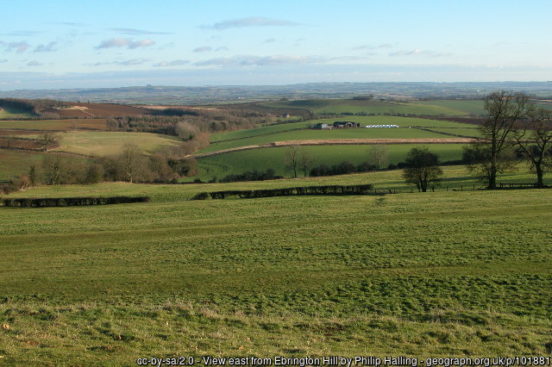
The far south of Warwickshire lies within the Cotswolds Area of Outstanding Natural Beauty. The Warwickshire – Oxfordshire border follows the north-eastward stretch of the Cotswold Hills to their far end at Warmington. Among the hills are fine Cotswold villages including Little Compton, Long Compton, Barton-on-the-Heath, Whichford, Upper Brailes, Lower Brailes, Tysoe and Ratley.

This final stretch of the Cotswolds is steeped in history, legend and myth. On the Oxfordshire side of the border, close to Long Compton, lie the Rollright Stones, a Neolithic stone circle. On the Warwickshire side is the single monolith known as the King Stone, possibly a Bronze Age grave marker. Close to the unspoilt Cotswold hamlet of Winderton lies one of England’s finest Tudor country houses. Compton Wynyates was built by Sir William Compton in the 16th-century and has been described by Anthony Emery as ‘the markedly romantic and singularly complete early Tudor house’. The house is still the private Compton family home.
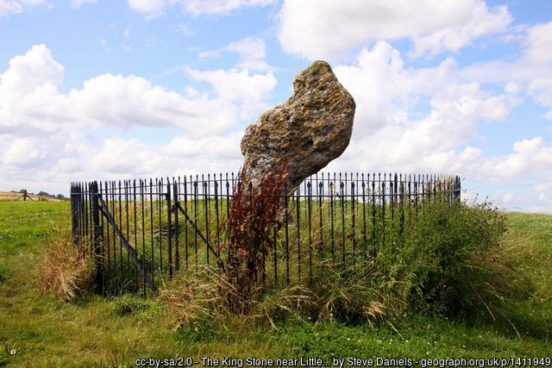
The far north-eastern part of the Cotswold scarp is known as the Edge Hill escarpment. The Red Horse of Tysoe was a hill figure cut into the red clay near the village of Tysoe. Camden’s Britannia (1607) notes that the vale below the figure was termed the Vale of the Red Horse, as it is known to this day. The figure is no longer visible, though aerial photographs revealed it to have been a huge, galloping horse around 300 feet long and 95 feet high. Slightly further along the Edge Hill escarpment lies Upton House (NT), built from the local yellow sandstone and dating from 1695. The house holds a major art collection including English and Continental old masters. The Battle of Edgehill (1642) was fought on the plain at the foot of Edge Hill. The hamlet of Edge Hill has a pub with an Octagonal Tower built of Cotswold stone in the 1740s and designed by noted Gothic revivalist Sanderson Miller.
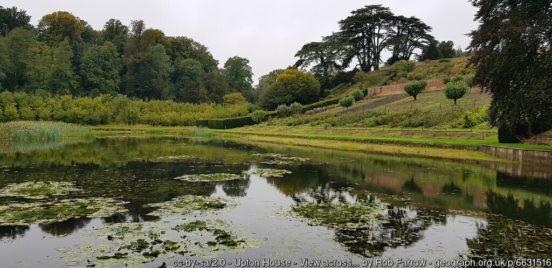
North of the Cotswolds, the Felden comprises most of the south-eastern part of Warwickshire. The Felden is an agricultural landscape strongly influenced by the post-mediæval enclosures of former strip fields. Along with the existing small, compact villages are many deserted mediæval villages and numerous sites of remnant ridge and furrow. The landscape is undulating with low hill tops, clay vales, sparse woodland and hedgerows, now denuded of the large elm trees that once grew in abundance. The Felden is drained by the rivers Avon and Leam flowing south-westerly. The Fosse Way passes through the heart of the Felden.
There are only three towns of any size in the Felden. Southam is a small market town on the River Stowe. Water from a natural spring feeds a holy well near the river bank. In the Middle Ages, Southam minted its own local currency. King Charles I used Southam’s mint to make new coins to pay his troops. The building is early 16th century and is now a public house. South of the town, close to the Oxfordshire border, is Farnborough Hall (NT), a country house dating from 1682. The house and its landscaped gardens (designed by Sanderson Miller) have been little altered in the last 200 years.
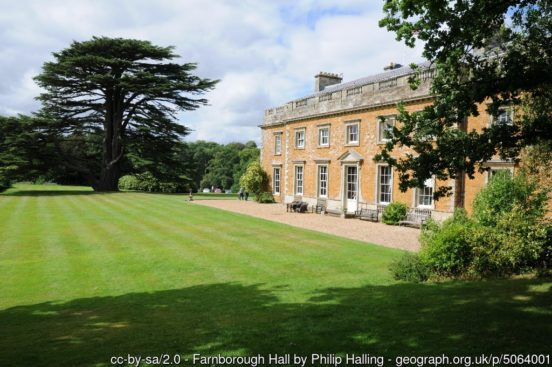
The town of Wellesbourne sits on the River Dene, close to its confluence with the Avon. Previously two separate, small villages, Wellesbourne has become a small commuter and industrial town. Charlecote Park (NT), a grand 16th century country house surrounded by its own deer park, lies at the point where the Dene meets the Avon. South-east of Wellesbourne is Compton Verney House, an 18th-century country mansion which houses an art gallery. Shipston-on-Stour lies close to the Cotswolds, in an enclave of Worcestershire, though locally in Warwickshire. The town was formerly an important sheep market.

To the north of the Felden and south of the Avon, occupying roughly a wedge-shaped area between Coventry, Leamington Spa and Rugby is the area known as Dunsmore. This was once the great Dunsmore Heath and still retains a character of historic heathland and woodlands. The name is reflected in many local place names including Stretton-on-Dunsmore, Ryton-on-Dunsmore, Bourton-on-Dunsmore, Dunchurch and Clifton-upon-Dunsmore. The Dun Cow was said to be a savage beast roaming Dunsmore Heath. It was reputedly slain by Guy of Warwick. One of its giant rib is displayed at Warwick Castle.
The village of Brinklow sits astride the Fosse Way as it continues its journey northward across Dunsmore towards Leicestershire. From the remains of Brinklow Castle, a large Norman motte-and-bailey castle, are spectacular views along the Fosse way and across much of the county. Between Brinklow and Coventry lies Coombe Abbey, a monastery until the Dissolution and then a royal property. The parklands and Coombe Pool were designed by Capability Brown. The house is now a hotel and the grounds a public park.
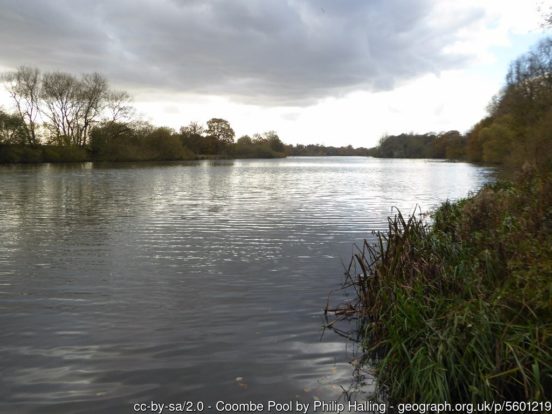
On the eastern side of Dunsmore is the market town of Rugby, famous for its school, the birthplace of Rugby football, and for being the birthplace of the poet Rupert Brooke. At the south-west of Dunsmore is Royal Leamington Spa, a gorgeous Georgian spa town and the birthplace of lawn tennis. The Royal Pump Rooms and Baths are now a museum and art gallery. The Jephson Gardens, alongside the River Leam, were first laid out in 1834.
Traditionally that part of Warwickshire to the north and west of the River Avon is known as Arden. In former times it was covered by the ancient Forest of Arden, reflected in place-names such as Henley-in-Arden, Hampton-in-Arden and Tanworth-in-Arden. Modern day Arden is a mix of urban and rural landscapes with the heavily urbanised centres of Birmingham, Coventry and Nuneaton set within and around a landscape of farmland, parkland and former wood pasture. The rural parts retain many mature hedgerow oaks, numerous patches of ancient woodland and parks containing remnants of wood-pasture. Mining and post industrial urbanisation is prominent in the landscape of the north-east around Nuneaton.
In the south-east of Arden lies Stratford-on-Avon, to some a tourist destination, to others a place of pilgrimage. Shakespeare’s birthplace remains almost as he would have known it; a leaning half-timbered house, one of many in the town and in the villages of the neighbourhood, including the home of his wife: Anne Hathaway’s Cottage, a large thatched, half-timbered house lies in extensive gardens at Shottery. Shakespeare’s grave lies in the chancel of the Holy Trinity Church, alongside the Avon. The Royal Shakespeare Company has three theatres in the town.

To the west of Stratford is a quiet rural area, with the town of Alcester lying close to the Worcestershire border. Alcester was founded by the Romans in around AD 47 as a walled fort and later became a Saxon market town. Alcester Abbey, a Benedictine monastery, was founded in 1138 by Ralph le Boteler, but largely demolished at the Dissolution. Today the town features architecture from the Mediæval, Tudor, Georgian, Victorian eras and the 20th century. South of the town is Ragley Hall, the ancestral seat of the Marquess of Hertford and one of the grand stately homes of England. North of the town is Coughton Court (NT), a Tudor country house with a long crenelated façade at the centre of which is a Tudor Gatehouse. Many of the newer suburbs of the new town development around Redditch lie in Warwickshire including Ipsley and Mappleborough Green, named after the villages of the area prior to the new town developments.
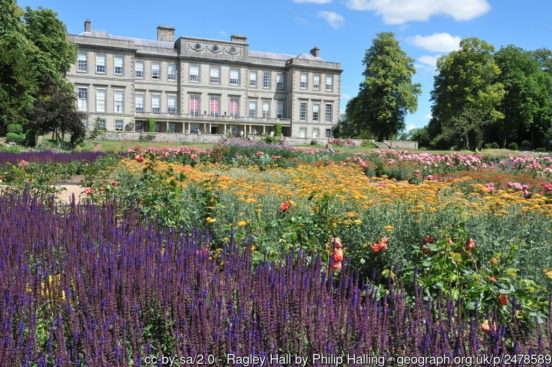
The county town Warwick, with its wealth of historic buildings and tangled old lanes, sits on the north bank of the Avon, close to the centre of its shire. Warwick Castle was first built by William the Conqueror in 1068 and, from 1088, belonged to generations of the Earl of Warwick and served as a symbol of their power. The Lord Leycester Hospital is a remarkable Elizabethan building, which still serves a similar purpose to that for which it was built: a retirement home for ex-servicemen. Within St Mary’s Church is the glorious Beauchamp Chapel, built in the 15th century to house the tomb of Richard Beauchamp, Earl of Warwick, one of the richest and most powerful men in history. It is a magnificent example of the European ecclesiastical architecture of its time. Warwickshire’s greatest treasure.
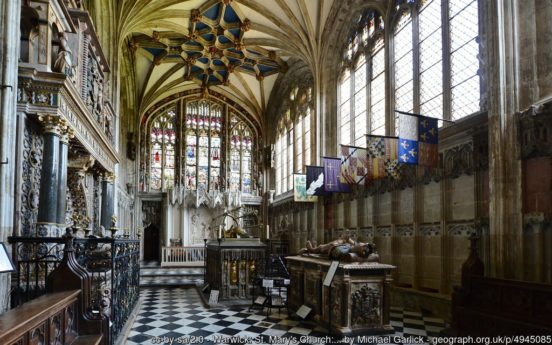
North of Warwick is Kenilworth, an ancient market town grown to modern dormitory town, though with its heritage still to the fore. Kenilworth Castle, constructed from Norman through to Tudor times, has been described by architectural historian Anthony Emery as “the finest surviving example of a semi-royal palace of the later middle ages, significant for its scale, form and quality of workmanship”. Kenilworth has played an important historical role. The castle was the subject of the six-month long Siege of Kenilworth in 1266, believed to be the longest siege in English history. It formed a base for Lancastrian operations in the Wars of the Roses. Kenilworth was also the scene of the removal of Edward II from the English throne, the French insult to Henry V in 1414, and the Earl of Leicester’s lavish reception of Queen Elizabeth I in 1575.
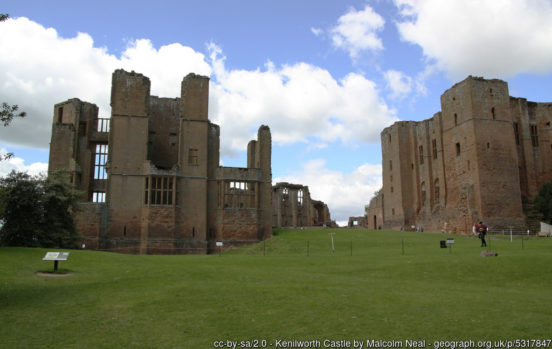
The area of Arden to the west of Warwick and Kenilworth is almost entirely rural. The largest settlement is the small town of Henley-in-Arden, known for its variety of historic buildings, some of which date back to mediæval times. The mile-long High Street is a conservation area. The village of Tanworth-in-Arden was the childhood home of folk musician Nick Drake. Baddesley Clinton (NT) is a moated manor house, dating from the 13th-century. Packwood House (NT) is a timber-framed Tudor manor house with a wealth of tapestries and fine furniture and a magnificent garden of clipped yew trees.
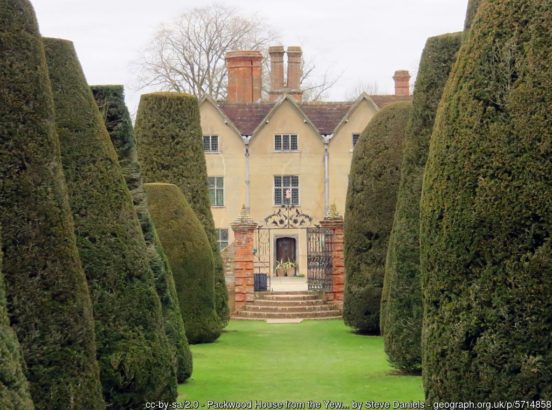
Lying just to the north of the Avon is the ancient city of Coventry, with its three cathedrals, its heritage of commerce and industry, its recovery from wartime devastation and its message of peace and reconciliation. St Mary’s Priory and Cathedral was founded in the 12th century by transformation of the earlier monastery of St Mary, but destroyed during the Dissolution in 1539. Excavated remains from the west end of the cathedral are open to the public. The 14th-century St Michael’s Cathedral (the “Old Cathedral”) was largely destroyed during the war, leaving the outer shell and the spire as a poignant memorial. The New Cathedral was opened in 1962 next to the ruins of the old. It was designed by Sir Basil Spence. The cathedral contains the tapestry Christ in Glory by Graham Sutherland. St Mary’s Guildhall, built between 1340-42, contains the 16th-century Coventry Tapestry, still hanging on the very wall for which it created over 500 years ago. Coventry is well known for the legendary 11th-century exploits of Lady Godiva.
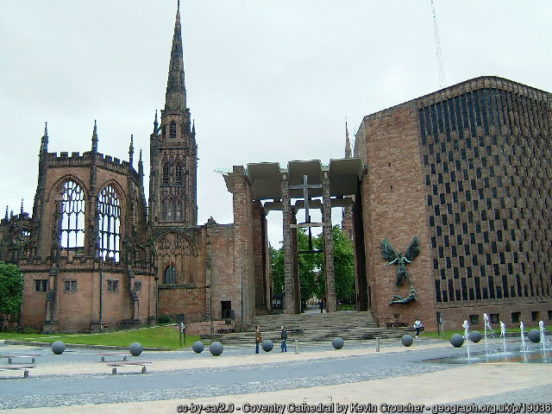
Watling Street, a Roman Road, forms the north-eastern border with Leicestershire for some distance, as once it formed the border with the Danelaw. The north-eastern part of the county was a centre of the mining industry from the 13th to the late 20th-century. The market towns of north-eastern Warwickshire, Atherstone, Bedworth and Nuneaton, were industrialised in the 19th century though heavy industry has now been replaced by distribution centres, light industry, and services. Atherstone, once an important hatting town, is famous for its Shrove Tuesday ball game, held annually since the early 12th century. The game is a complete free-for-all played along Watling Street. Nuneaton is most famous for its associations with the author George Eliot (Mary Ann Evans), who was born on a farm on the Arbury Estate just outside Nuneaton in 1819 and lived in the town for much of her early life. Arbury Hall itself was built on the site of the former Arbury Priory in a mixture of Tudor and 18th-century Gothic Revival architecture. Originally a small market town with Anglo-Saxon origin, Bedworth became a coal mining town, though the last colliery was closed in 1994.
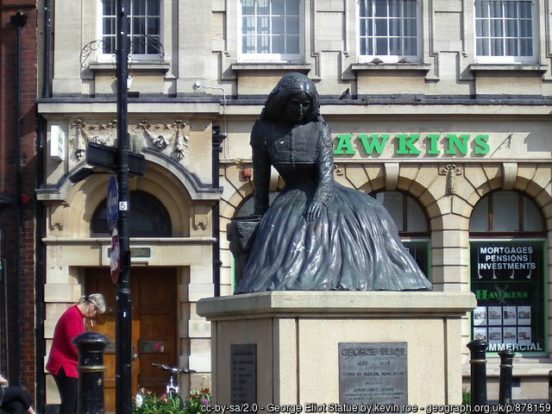
At the far north of Warwickshire, on the Staffordshire border, is Tamworth. The old town was more or less evenly split between the two counties, with St Editha’s church in Staffordshire and Tamworth Castle in Warwickshire. This is a town of great history; Tamworth was once a capital of Mercia, and the hill on which its bold castle stands has been a fortress at least since those days. The statue of Queen Æthelflæd, Lady of the Mercians, beneath its ramparts recalls her liberation of the town from the Danes and its place as her capital thereafter. The majority of the vast modern expansion of the town has been to the south of the Tame in Warwickshire, encompassing the former towns and villages of Glascote, Kettlebrook, Amington and Wilnecote. The modern town’s main industries include logistics, engineering, clothing, brick, tile and paper manufacture.
There is much Arden countryside in the north of the county, forming a huge lunge between the urban areas around Coventry and Nuneaton and the conurbation around Birmingham. In this area are many delightful villages including Berkswell, with its fine restored Berkswell Windmill; Meriden, which claims to the geographic centre of England; and Hampton-in-Arden, with many 17th-centry and timber framed building and a 15th-century Packhorse Bridge over the River Blythe.
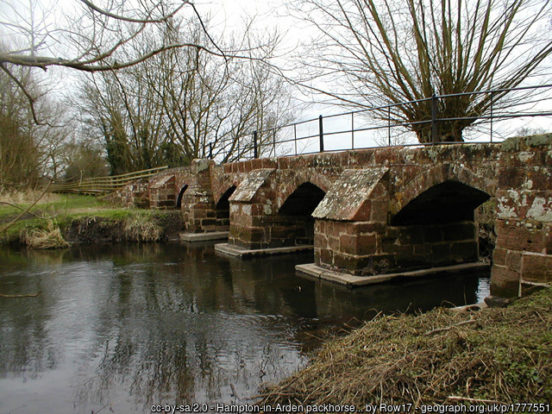
Solihull is a pleasant and prosperous town, noted for its historic architecture, which includes surviving examples of timber framed Tudor style houses and shops. The town has existed since mediæval times when it was founded as a market town and it later became an important coaching and mail coach stop. The Industrial Revolution largely passed Solihull by and despite its massive growth in the 20th century, it remains a distinct town and retains the feeling of being at heart a small town.
To the north-east of Solihull are Birmingham International Airport and the National Exhibition Centre. Close to those is Chelmsley Wood, a large 1960s development named after the woodland it replaced. North-east of Chelmsley Wood is the small market town of Coleshill. North-west of Chelmsley Wood is Castle Bromwich, a former village grown to suburban town. Castle Bromwich Hall is a Jacobean mansion. The walled Baroque gardens are the only remaining example in the country of a formal English garden design. North-west of Castle Bromwich is Erdington, once a separate town but now a suburb of Birmingham. South-east of Erdington lies Birmingham proper.
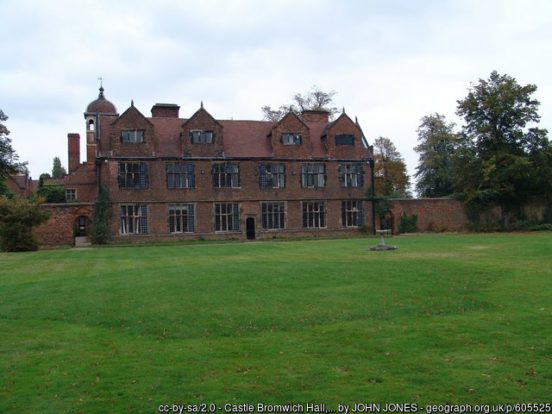
Birmingham was a powerhouse of the Industrial Revolution, filled with factories, which led to its being dubbed “the toyshop of the world” and “the city of a thousand trades”. Birmingham is the centre also of the greatest network of canals in Britain, linking it not only with the industrial towns of the Black Country but also with the rest of the country. Although Birmingham’s industrial importance has declined, it has developed into a national commercial centre and a national hub for conferences, retail and events along with an established high tech, research and development sector. The Jewellery Quarter is Europe’s largest concentration of businesses involved in the jewellery trade. Edgbaston, south of the city centre, has a reputation as the most upmarket and affluent part of Birmingham or “where the trees begin”. The University of Birmingham is in Edgbaston, established here as the Birmingham Medical School in 1825. Warwickshire County Cricket Club is based at the Edgbaston Cricket Ground. Whilst developing alongside Birmingham in the late 19th-century, Aston has long since come to be seen as part of Birmingham. Aston Hall is a leading example of the Jacobean prodigy house, designed by John Thorpe and built between 1618 and 1635. The Birmingham Back to Backs (NT) at 50–54 Inge Street and 55–63 Hurst Street are the last surviving court of back-to-back houses in the city. Birmingham is a city constantly reinventing and redeveloping itself. Its many suburbs have a variety unique to the city and stretch out beyond Warwickshire.
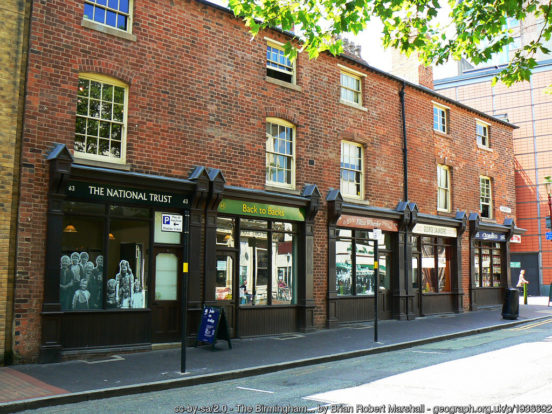
At the far north-west of the county is Sutton Coldfield with its magnificent former Royal Forest of Sutton Park. The park was established as a Royal Forest by the Anglo Saxon kings of Mercia. By the early 12th century, it was in use as a Norman mediæval deer park. The land was given to the people of Sutton Coldfield by King Henry VIII in 1528 after Bishop John Vesey asked for it as a present to the people of Sutton Coldfield.
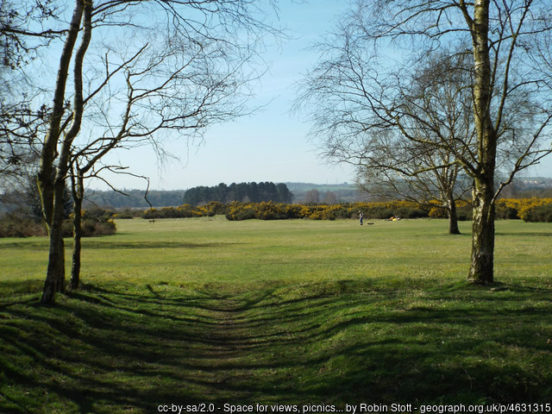
In Anglo-Saxon times the area wich became Warwickshire was part of the kingdom of Mercia, absorbed during the 9th century into the kingdom of Wessex. The first reference to Warwickshire as such was in 1001, as Wæringscir named after Warwick (meaning “weir village”). During the Middle Ages Warwickshire was dominated by Coventry, which was at the time one of the most important cities in England due to its textiles trade. Major towns grew around the castles at Warwick and Kenilworth. The southernmost part of the county, at the edge of the Cotswolds, thrived on wool production. Warwickshire played a key part in the English Civil War, with the Battle of Edgehill and other skirmishes taking place in the county. During the Industrial Revolution Warwickshire became one of Britain’s foremost industrial counties, with the large industrial cities of Birmingham and Coventry within its boundaries.
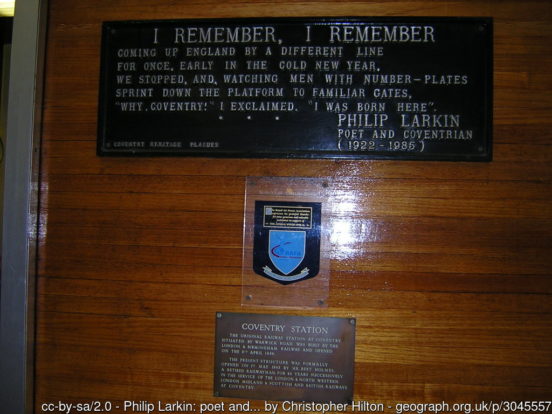
The county is proud of its literary heritage, boasting not just Shakespeare but Michael Drayton (Hartshill), George Eliot (Nuneaton), Rupert Brooke (Rugby), Philip Larkin (Coventry), and John Wyndham (Dorridge).

The Warwickshire Flag features the traditional bear and ragged staff used in the county since the Middle Ages as insignia of the Earls of Warwick and subsequently appearing as the regimental badges of local military units and the emblems of numerous sporting and other county organisations.

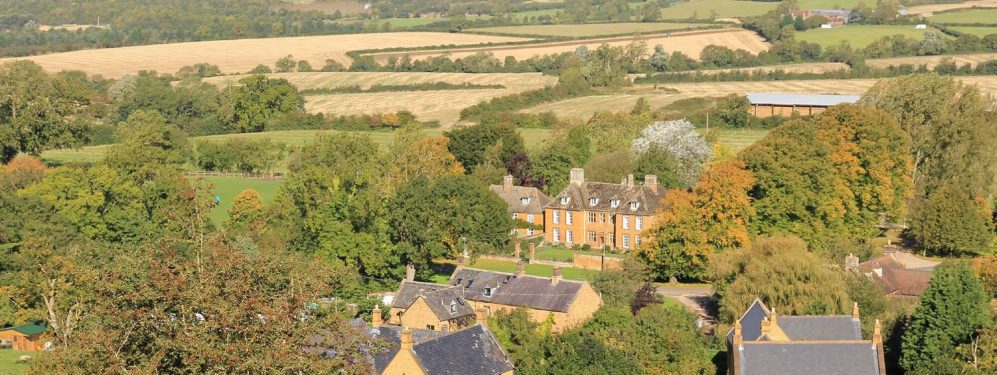
4 thoughts on “Warwickshire Day – 23rd April”
I totally agree with you and I hope it is made official. Interesting that he was born and died on a 23rd. Surely that has significance somewhere.
Quite excellent, however, Recognition of The Charterhouse on London road in Coventry which is due to open to the public very soon would be well worth a mention !……….
Kind regards,
Kieran Connolly.
I’m from Warwick and I was born on the 23rd April – It’s got to be our county day!!
Lovely article, thank you. Just one thing: Birmingham is the ‘Workshop’ of the world rather than the ‘toy shop’ – though many toys were made there! And perhaps a mention of my home, Handsworth, as the birthplace of the industrial revolution through its association with Boulton and Watt, would be good.
Thanks again!